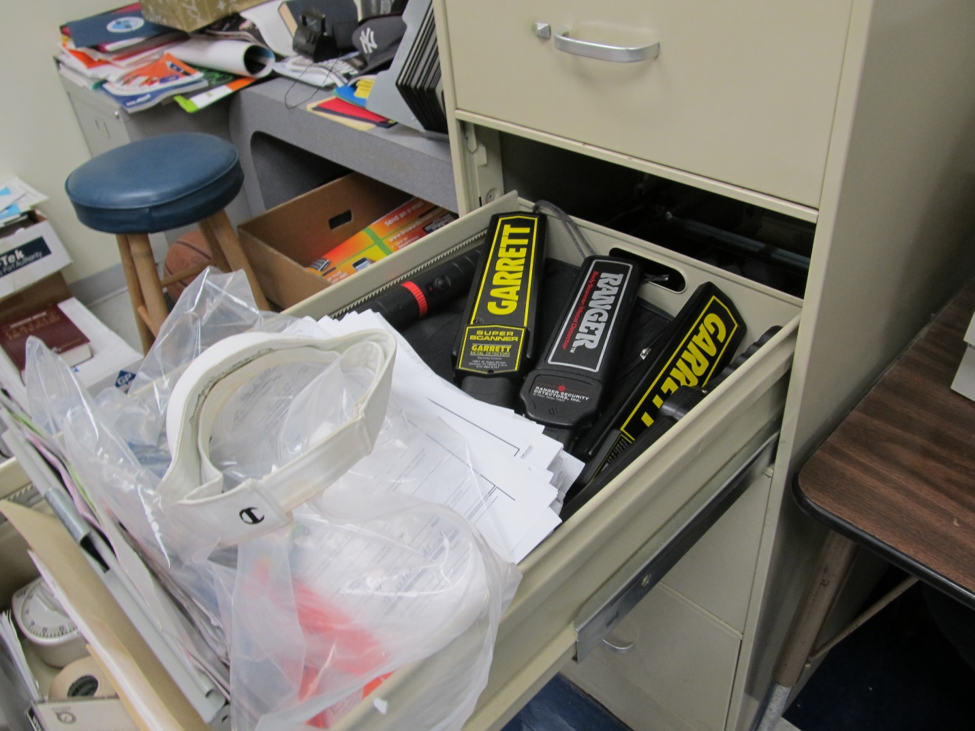
School officials should exercise care to implement school security enhancements they can sustain with fidelity. One commonly discussed option for the prevention of school shootings is the use of airport and courthouse style entry point metal detection. While excellent metal detection equipment is relatively inexpensive, staffing, security, X-ray screening equipment, and security measures to support effective entry point weapons screening of this type can cost between $500,000 and one million dollars a year for a large high school. For this reason, alternative approaches to weapons screening such as demonstrably random numerical sequence entry point screening and randomly selected classroom and school bus occupant screening can be more practical and, in my experience, are often more effective.
While we have been seeing many of the same harmful patterns that we saw after the tragic attacks at Columbine High School and Sandy Hook Elementary School in the wake of a series of five major school attacks in the 2017-2018 school year, we have noted an even more pervasive and troubling trend during the past two years. While many schools and districts have implemented considerable positive life-safety enhancements, some of the reactions to these terrible events have resulted in a considerable amount of damage to school safety across the nation. This damage has resulted from demands from the public that school and public safety officials “do something” to stop school shootings without proper evaluation, consideration of reliable national school fatality data, and a comprehensive view of risks to safety and security.
The negative effects of poorly developed and implemented active shooter training programs that became common after the Sandy Hook attack have caused significant degradation of school emergency preparedness in many schools. As I have mentioned in other writings, we are seeing increasing evidence that these types of training programs can be quite dangerous. However, in addition to the severe problems from emotively driven active shooter training approaches, we have been seeing intensive pressure for schools to implement security measures that people hope can ensure that a school shooting cannot possibly occur. As there are no such security measures in any setting let alone in K12 schools, this is placing tremendous and potentially dangerous pressure on school officials.
One particularly prominent and concerning tendency of this type is the pressure to implement extensive target-hardening, security technologies, and emergency communications systems without the human resources to support them.
For example, many school districts have been under considerable pressure to implement entry point metal detection by a public that is typically unaware of the actual costs required for adequate supportive security measures. For example, security X-ray technology required to reliably and effectively screen bookbags, purses, musical instrument cases, and other hand-carry items can be staggering. This is even more difficult for large K12 schools due to the challenges created by the need to screen massive numbers of students in short time spans each morning. In addition, perimeter access control technology and most importantly, the significant ongoing budget required for personnel to accomplish reasonably reliable entry point metal detection are very costly. For many of our nation’s larger and more complex middle and high school campuses, running reasonably reliable entry point metal detection during the daytime and all evening and weekend hours the facilities are open, personnel costs can run from between $250,000 to $1,000,000 per school per year depending on a variety of factors such as local labor costs. As with an airport or courthouse, if screening is not conducted during all hours of operation, it is very easy for a student to defeat the screening process. For example, a student or non-student can enter a school and hide a gun to be retrieved later while an evening event is being held but no security screening is being conducted.
One of our primary concerns is that school officials may agree to conduct entry point metal detection or other security upgrades without receiving the funding to support them that is needed to make them work with reasonable reliability. This inherently results in problems the technologies were purchased to address taking place in spite of significant expenditures. In many cases, the discussion and resulting litigation moves from “why didn’t you use metal detectors” (or a variety of other security technologies) to “you were incompetent because you spent X dollars and still had a shooting.” In my experience, thoughtful explanation of the resources and thus funding that will be needed to effectively support the security upgrades combined with a tactful but clear message that while there are ways to reduce risk, but there are no 100% reliable ways to absolutely assure that violence will not occur in any setting is not only honest but critical for success. As an example, I have tried to help parents understand the limits of even well-funded, professional and extensive security measures, repeated breaches of White House security by multiple intruders over the years demonstrate that something as seemingly simple as keeping an intruder out of one of the most heavily secured and budgeted facilities in the world has been challenging.
Regardless of the type of enhancement being considered, we caution school officials to take care not to attempt to implement approaches that may make people feel good in the short term but require resources beyond those available to implement with fidelity. The cost of appeasement to urgent demands in the short-term can be dire when unrealistic approaches are revealed as a facade of security in the long run. My advice is to thoughtfully develop a comprehensive and sustainable approach to school security while not biting off more than you can chew for short-term pacification which creates great risks of long-term failures.